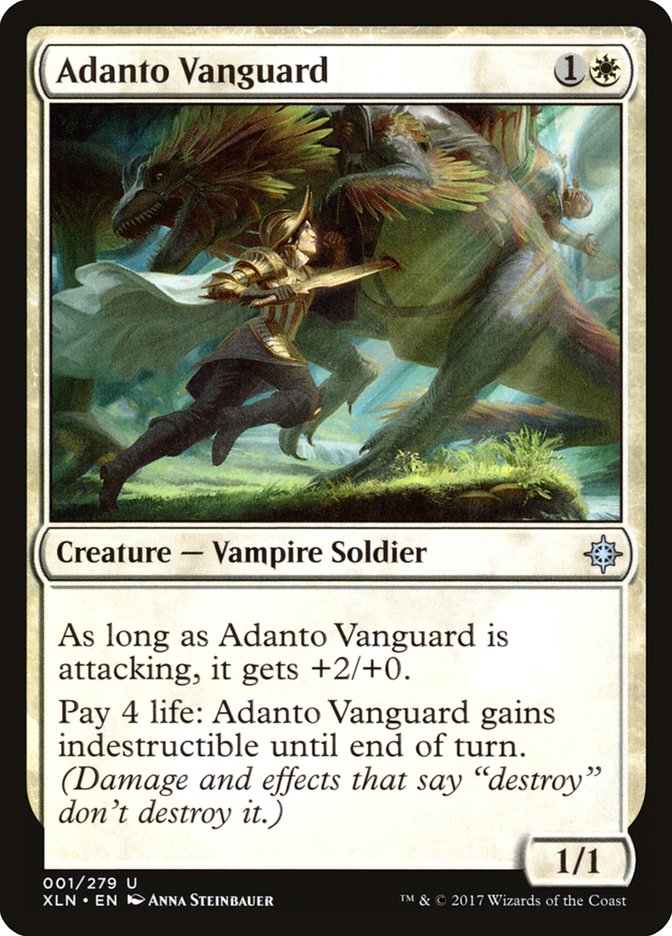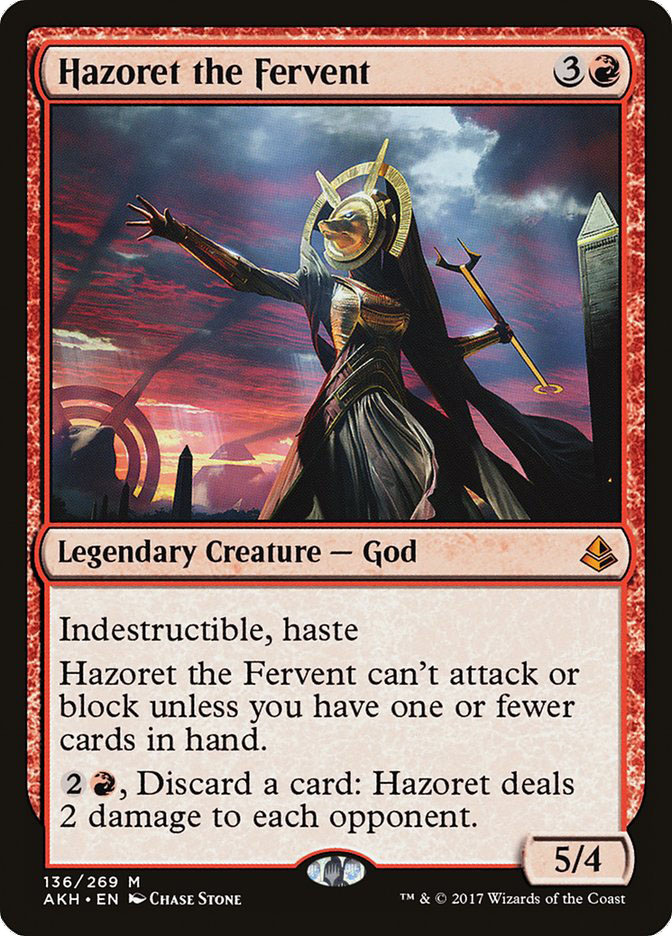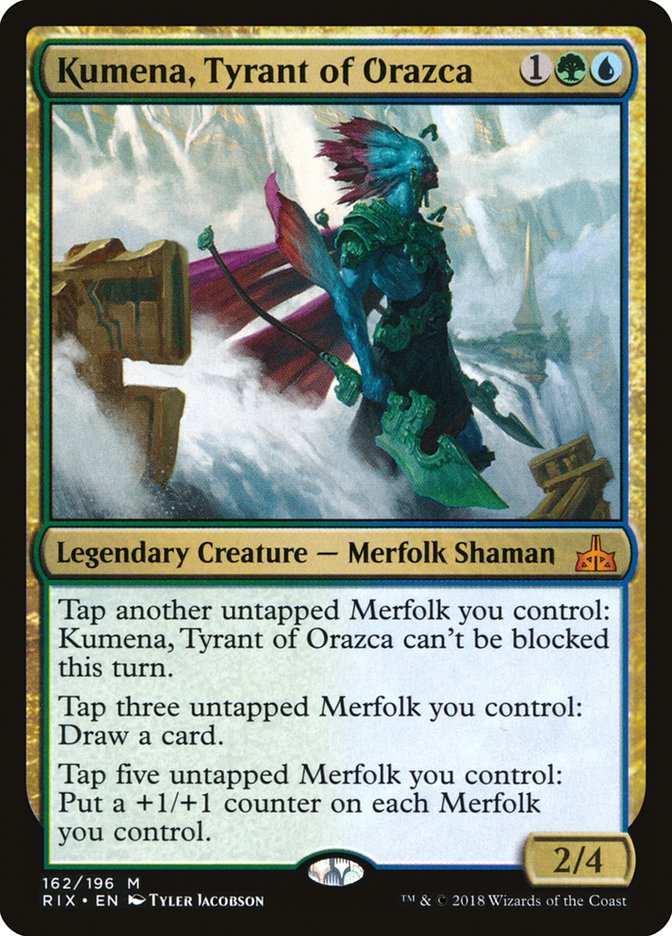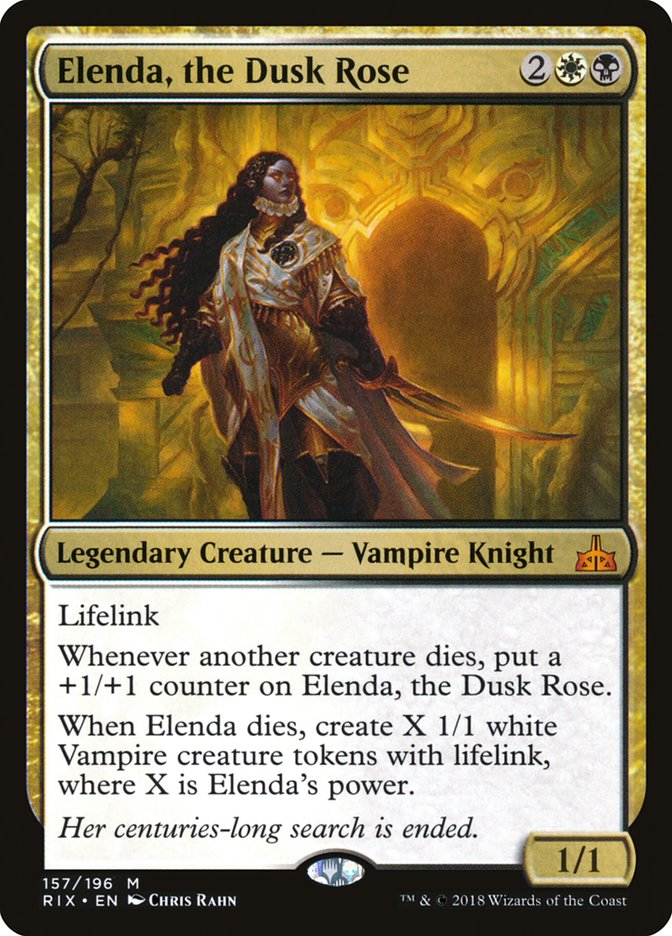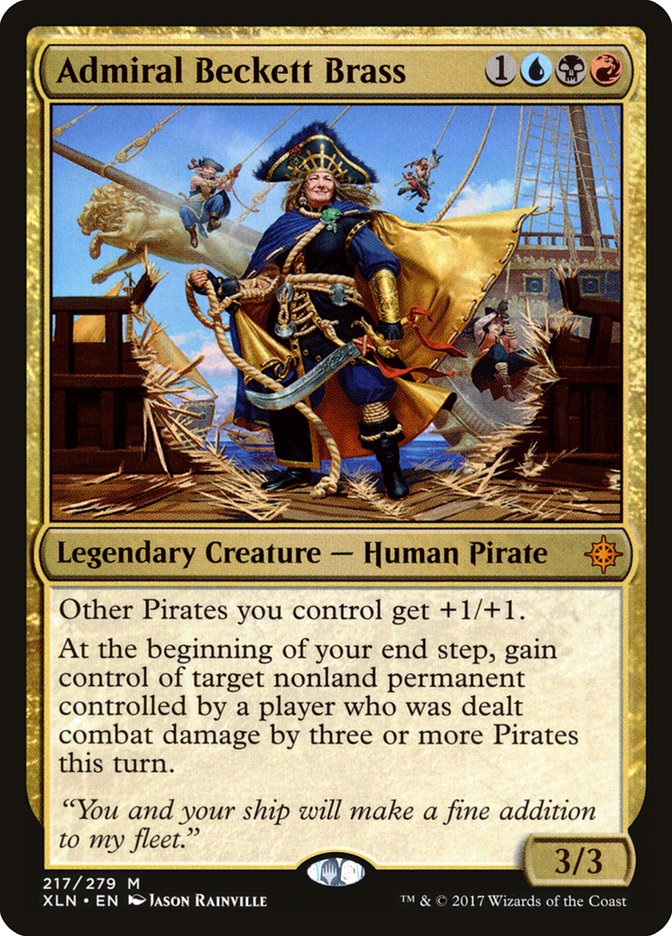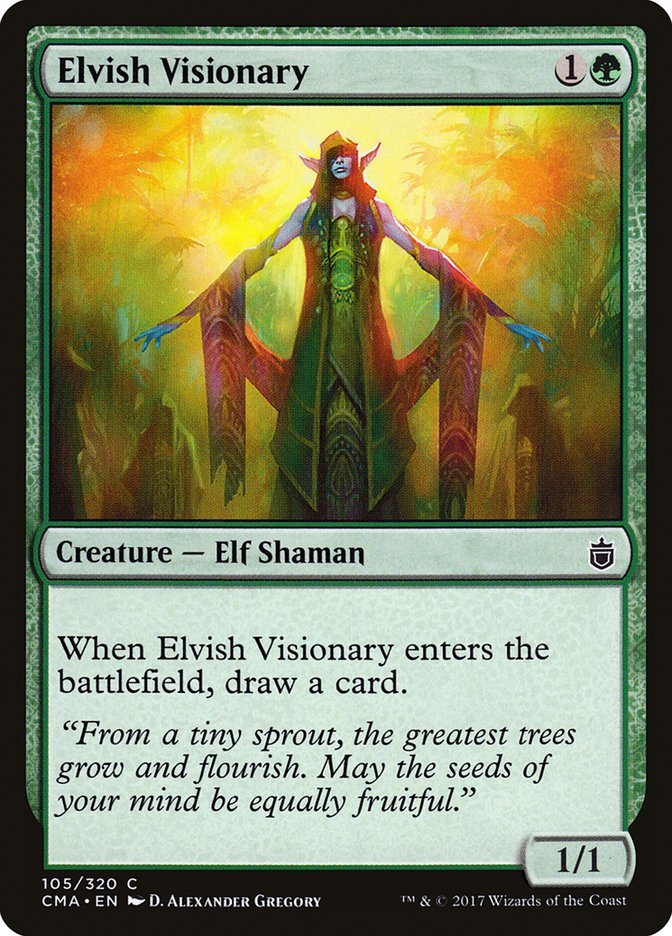We haven’t seen a lot of Standard happening these days. Consumer confidence
in the format was at an all-time low as Temur Energy continued its yearlong
dominance on the format, leading to a shift away from Standard on the SCG
Tour, and the most recent Pro Tour saw a return of Modern to the big stage.
So even though the format is rather new with the introduction of Rivals of
Ixalan and the banning of four more cards, bringing the total in the last
year and change up to 842, no one has been quite sure exactly what decks
are good in the format and what decks are pretenders.
You see, in the early days of a new Standard format, there is always a
metagame where some portion of the successful decks drop out as they mostly
preyed on other decks that weren’t viable over the long term, leading the
format to narrow around the most potent strategies. With so little Standard
coverage recently, we have yet to reach that narrowing stage in this
Standard format, but last weekend’s Grand Prix in Memphis should go a long
way toward pushing the format along to the next stage in its evolution.
I was an excited spectator for this tournament, and following along this
weekend, I was able to witness which cards and strategies overperformed and
which ones failed to meet expectations:
Loser:
Going into the tournament I was hyped to see Adanto Vanguard finally take
its rightful place as a format staple. It’s an aggressively costed creature
that matches up very well against removal spells, and most reactive decks
in the format are trying to contain opposing creatures with removal rather
than blockers.
However, looking at the top 32 decklists from last weekend there are zero
copies of the two drop. What went wrong? As it turns out, there are more
than enough cards that match up well against Adanto Vanguard to make up for
the fact that Fatal Push and red removal doesn’t. Moment of Craving is a
popular card that has made its way to the maindeck of U/B Control decks and
the sideboards of many others.
Also, Vraska’s Contempt, while trading poorly on mana, doesn’t find many
other targets against the decks Adanto Vanguard appears in, which prefer to
flood the battlefield with small creatures rather than present big threats,
and Whirler Virtuoso can easily make the card awkward in combat; trading
three energy for four life a couple times makes it very difficult to
protect the card later on, thereby turning on removal that would’ve
otherwise been rendered useless.
Combine this with the card’s natural weakness in aggro mirrors due to being
a poor blocker and you have a card that just doesn’t slot well in the
current Standard metagame. It’s still more than powerful enough to see
play, and if the metagame shifts in a way that decreases the density of
cards that match up well against it, you can bett that it will return. That
said, it doesn’t appear to be a powerful enough card to see play in
metagmes that aren’t favorable for it, thus precluding it from being a
staple of the format.
Winner:
I don’t think anyone has ever doubted Torrential Gearhulk’s power. The card
immediately made waves by taking first and second at Pro Tour Kaladesh and
afterward became a staple of control decks when combined with efficient
removal and Glimmer of Genius.
However, during the reign of Temur Energy, the card’s stock dropped
significantly since playing attrition against that deck was incredibly
difficult, leading to a rise in Approach of the Second Sun as a means of
going over the top of Rogue Refiner and company. It seemed as though
Torrential Gearhulk’s time in the sun had passed.
Now that the energy menace has been contained, Torrential Gearhulk has
returned to the top spot for control finishers. U/B Control put two players
into the Top 8 of the Grand Prix and is clearly the best control deck in
the format. The midrange decks aren’t as threatening going long, but they
still have access to the Negates and Duresses that give Approach opponents
fits after sideboarding, so the consistency in the face of disruption
provided by a simpler template of Torrential Gearhulk, counters, removal,
and card draw is once again preferable.
I imagine most control players didn’t enjoy playing Approach of the Second
Sun since it offends their “I’m going to drag this game out for as long as
possible and take great pleasure in watching my opponent desperately try to
squeeze out the last few points of damage” sensibility, and I enjoy the
sequencing game of trying to limit the impact of Snapcaster Mage’s older
cousin, so all in all a welcome change to the format.
Loser:
Everyone expected energy cards to be banned in January, but many players,
myself included, were surprised to see Ramunap Ruins and Rampaging
Ferocidon leave the format. Attacking a linear aggro deck didn’t seem
nearly as difficult as competing against a flexible midrange deck that
could punish stumbles with Longtusk Cub and play three or four colors with
few mana issues, but it appears now as if WotC’s fear of a format dominated
by Mono-Red was somewhat well-founded.
Despite the loss of two of its better cards, Mono-Red Aggro had been easily
the most popular deck in the early weeks of the format and performed well
over that span. However, in its first major test, the deck failed to take a
spot in the Top 8, showing that in its weakened state it is indeed
beatable. The talk about Standard has been around Hazoret and The Scarab
God, and it’s the latter that won the battle last weekend.
Winner:
Having vanquished its primary enemy and taken the undisputed title of “Best
Card in Standard,” The Scarab God is a winner despite not making the finals
of the tournament. Five of the other top 8 decks featured the card though,
and it’s a staple of both the best control and the best midrange deck in
the format. It’s simply the most powerful threat in Standard and has the
benefit of overlapping with the color with the best removal. You can’t ask
for much more than that so expect this one to be winning games all the way
until its rotation.
Loser:
It’s been almost six months now since Ixalan was printed, bringing with it
the next wave of tribal cards and in that time no deck built around those
payoffs has been able to have more than fleeting success in Standard. Given
that we’re unlikely to see further additions to any of these tribes as we
move from Ixalan to Dominaria it also seems unlikely that any of the tribes
will be players in the format.
Over the fall we had the excuse that Temur Energy was simply too powerful
for tribal decks to compete, but now it’s clear that Merfolk, Dinosaurs,
Vampires, and Pirates were all simply lacking. It takes a lot of pieces to
build a tribal deck, and with the incredibly high quality of removal that
exists in Standard right now it’s hard to consistently assemble those
pieces to take advantage of the tribal synergies.
In the face of such disruption, tribal decks either need to be nigh
unbeatable when things do come together, or have enough powerful individual
pieces that they can stand on their own. None of the Ixalan tribes have
been demonstrated to have either characteristic. In fact, they seem rather
inconsistent because the mana for aggressive decks in Standard is quite
poor.
Of course there’s one person who simply won’t let the tribal dream die:
Creatures (15)
Lands (24)
Spells (21)
- 2 Fatal Push
- 2 Thopter Arrest
- 4 Call to the Feast
- 2 Ixalan's Binding
- 3 Legion's Landing
- 4 Queen's Commission
- 4 Radiant Destiny
Sideboard

I have no idea if this deck is good, but I sure hope it is. It would be a
shame to not have the Ixalan tribes appear in Standard at all, and Crested
Sunmare has long been a pet card of mine. Token makers are quite
well-positioned in a Standard format defined by the quality of its spot
removal, and I’ll gladly pay a life to cast the best card ever printed:
Who wouldn’t?
But despite Jack’s valiant efforts, it’s clear that tribal decks in general
just aren’t up to par in Standard. If you’re looking for well-developed,
high-synergy decks you still have Modern, but it’s raw power that rules in
Standard and that’s not changing any time soon.
Losers:

For those not in the know, this is the self-styled nickname of Brad Nelson
and Corey Baumeister as they spent the better part of the last year tearing
apart every Standard Grand Prix they attended. It looked like they were
poised to do the same in Memphis after a great Saturday, but the wheels
finally came off on Sunday and they had to settle for 26th and 11th place
respectively, a combined record of 23-6-1.
Only a 78.3% win rate, well below their running average of 103%. Come on,
guys, it’s time to step it up a bit. I mean, is it even worth it to show up
if you’re only going to win $1500 between the two of you? It’s like you’re
not even trying.
On the bright side, other people get to win Standard GPs now. Though I
imagine Brad is now going to isolate himself completely from the outside
world and play 22 hours of Magic Online a day until he has played 1000
matches with every possible seventy-five card configuration in Standard,
emerging from his cocoon having ascended to his next stage of existence as
a radiating ball of light and a mastery of Standard the likes of which no
one has ever seen.
Or, maybe he’s just on his couch trying to keep his cats off his keyboard.
No one knows for sure…
Winners…
All of us. Standard.
I mentioned earlier that consumer confidence in Standard has been at an
all-time low. That was an understatement. It was in the basement. Standard
hasn’t been good since the release of Battle for Zendikar with the
exception of brief periods of time where we were still figuring out which
deck was literally broken.
And unlike other times when Standard has been broken, it wasn’t a single,
easily identifiable culprit. It seemed like every time one problem card
rotated or was banned, another one popped up. There was Collected Company
and Gideon, Ally of Zendikar. Then it was Smuggler’s Copter and Emrakul,
the Promised End. Then Felidar Guardian and Aetherworks Marvel. Then Rogue
Refiner and Ramunap Ruins. The cycle had gone on long enough that I was
happy to forget Standard even existed outside of a few tournaments and
focus on Modern.
Thankfully, it looks like the dark days are behind us. Standard looks
healthy, with aggro, midrange, and control decks all represented in the top
echelons of the format, with a smattering of options at the lower levels
including those base archetypes and some cool engine decks like W/B Tokens
and God-Pharaoh’s Gift.
This is the first time I’ve been excited to play Standard in a very long
time, and that’s despite none of the current decks having any particular
appeal to me. It’s just that the format I saw in Memphis had a great
balance of deck/archetype diversity and interesting play patterns.
In the “I hate this format and you’re wrong/I love this format and you’re
wrong” debates we love to engage in you often find players choosing sides
between those two traits, trying to argue why one is significantly more
important than the other, but the best formats always have a balance of the
two, and while Temur Energy mirrors may have been skill-intensive, not
having any variance in play patterns makes a format grow stale rather
quickly, so you need archetype diversity to keep the format fresh.
As the format continues to evolve and we continue to explore it I’m sure
there will be some retraction in the spectrum of competitive decks, but
that’s to be expected in any Standard format. But all indications from
Grand Prix Memphis are that Standard is once again healthy and fun.


